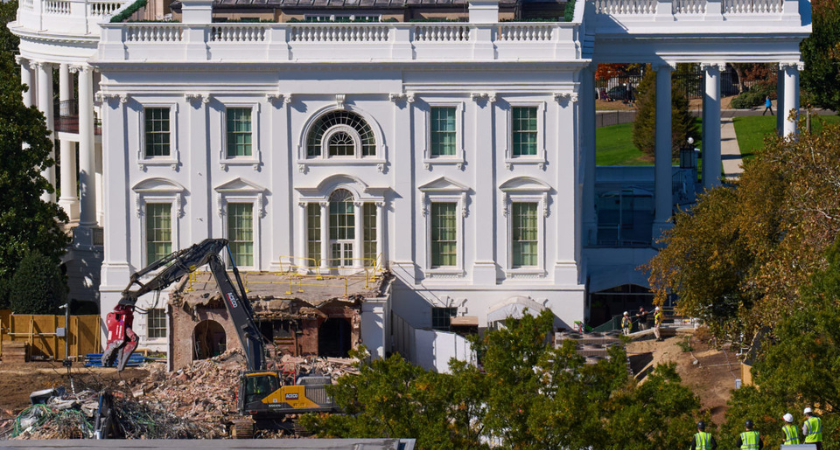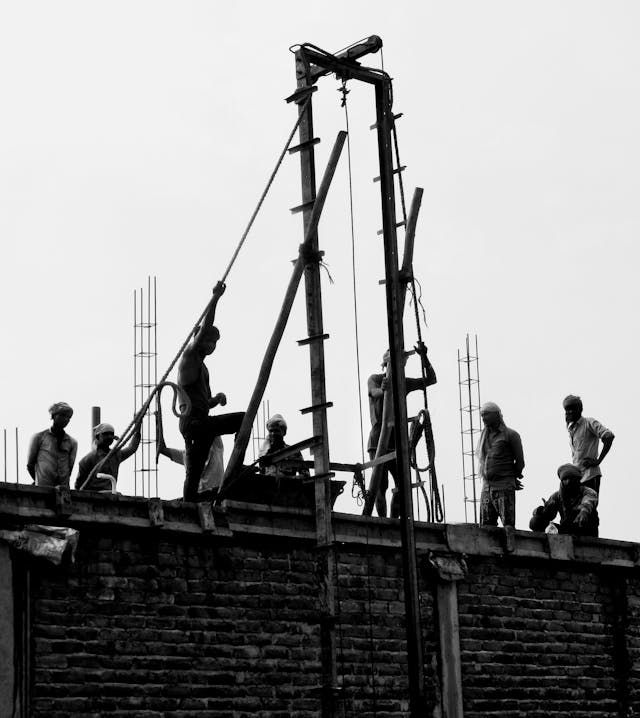
WASHINGTON, D.C. — The East Wing of the White House — long home to the first lady’s offices and the public entrance to the “people’s house” — has been largely demolished this week to make way for President Donald Trump’s controversial $300 million, 90,000-square-foot ballroom.

Trump has described the new ballroom as part of an effort to “modernize the East Wing,” with officials insisting that the construction “follows legal and historical precedent.” But images showing heavy machinery tearing into the East Wing façade have ignited fierce public backlash and legal challenges from preservation groups and citizens alike.
A Virginia couple, Charles and Judith Voorhees, filed a lawsuit Thursday seeking an emergency order to halt demolition, claiming the project moved forward “without legally required approvals or reviews.” The lawsuit underscores mounting concern that the White House bypassed established preservation procedures in a rush to begin work.
Several historical and preservation organizations have condemned the project, calling for greater transparency. Collectively, their statements warn that this marks the first major change to the White House exterior in more than 80 years — and could set a dangerous precedent for federal heritage protections.
“There was kind of an ambiguity about the way things were framed from the get-go,” said Priya Jain, chair of the Society of Architectural Historians’ Heritage Conservation Committee. She noted that her organization has urged the administration to clarify its process and ensure the public understands how decisions about the nation’s most symbolic building are made.
Author Kate Andersen Brower, who has written extensively on the daily life and traditions of the White House, said the demolition represents the loss of a vital piece of American history.
“In flattening the East Wing of the White House, we lose a significant piece of history,” Brower said.
Built in 1902 and later renovated in 1942, the East Wing was more than just a functional office building — it served as the public entrance, housed the White House theater, and included offices for legislative affairs, military aides, and calligraphers. For generations, it symbolized the public’s connection to the presidency.
“Truly, the power center in the White House is always the Oval Office and the West Wing,” Brower added. “If you have the first lady and her staff working out of the Eisenhower Executive Office Building, which I think is what will likely happen, they’re even more removed from the center of power.”
Brower recalled that Rosalynn Carter was the first presidential spouse to have an office in the East Wing. Later first ladies — from Nancy Reagan to Michelle Obama — used the space as their operational hub. “It speaks a lot to how diminished the role of the president’s spouse has become,” she said.
In remarks last week, President Trump said his advisors assured him that he had the authority to proceed immediately without outside review.
“Sir, this is the White House. You’re the president of the United States. You can do anything you want,” Trump recalled them saying.
At Thursday’s press briefing, White House Press Secretary Karoline Leavitt defended the decision, saying the demolition is essential to support the new ballroom’s structure. “There have been many presidents in the past who have made their mark on this beautiful White House complex,” Leavitt said. “I think sitting here today we’re all grateful for those efforts and the modifications that happened at that time.”
She added that the administration has been “clear since the project was announced earlier this year” that the East Wing would be modernized. However, the White House has not released detailed plans for the ballroom or specified when those designs will be made public.

Experts point out that the White House is exempt from Section 106 of the National Historic Preservation Act, which requires federal projects to undergo historical impact reviews. That exemption — shared only with the U.S. Capitol and Supreme Court — has allowed past presidents to approve major changes without formal review.
“Because of that reason, a formal 106 process was not initiated,” Jain said, noting that prior administrations typically consulted with the National Park Service and preservation experts before undertaking such work. She added that past efforts, like a 2000 preservation and management plan, included public input and environmental assessments — steps absent in the current case.
Preservation organizations and professional associations have urged a pause on the project. The American Institute of Architects (AIA) condemned the demolition and called for a congressional investigation, arguing that even if privately funded, “the White House is not a private building.”
“I think Americans feel such an emotional attachment to the House itself that it’s hard to stomach watching bits of it be gutted and torn down and bulldozed,” Brower said. “It’s just heartbreaking.”
The White House Historical Association said it has preserved key artifacts and completed a comprehensive digital scan of the East Wing before demolition began, ensuring a record of the site’s appearance and design.
Still, critics say the symbolic damage is already done. “Because of the visibility of this project and the public nature of it,” Jain noted, “it really has the ability to impact how we treat historic buildings more broadly in the country and our approach to them.”
According to Leavitt, construction of the ballroom is expected to be completed before the end of Trump’s term — ensuring it will stand as one of the most controversial additions to the White House in modern history.
Originally reported by PBS News.